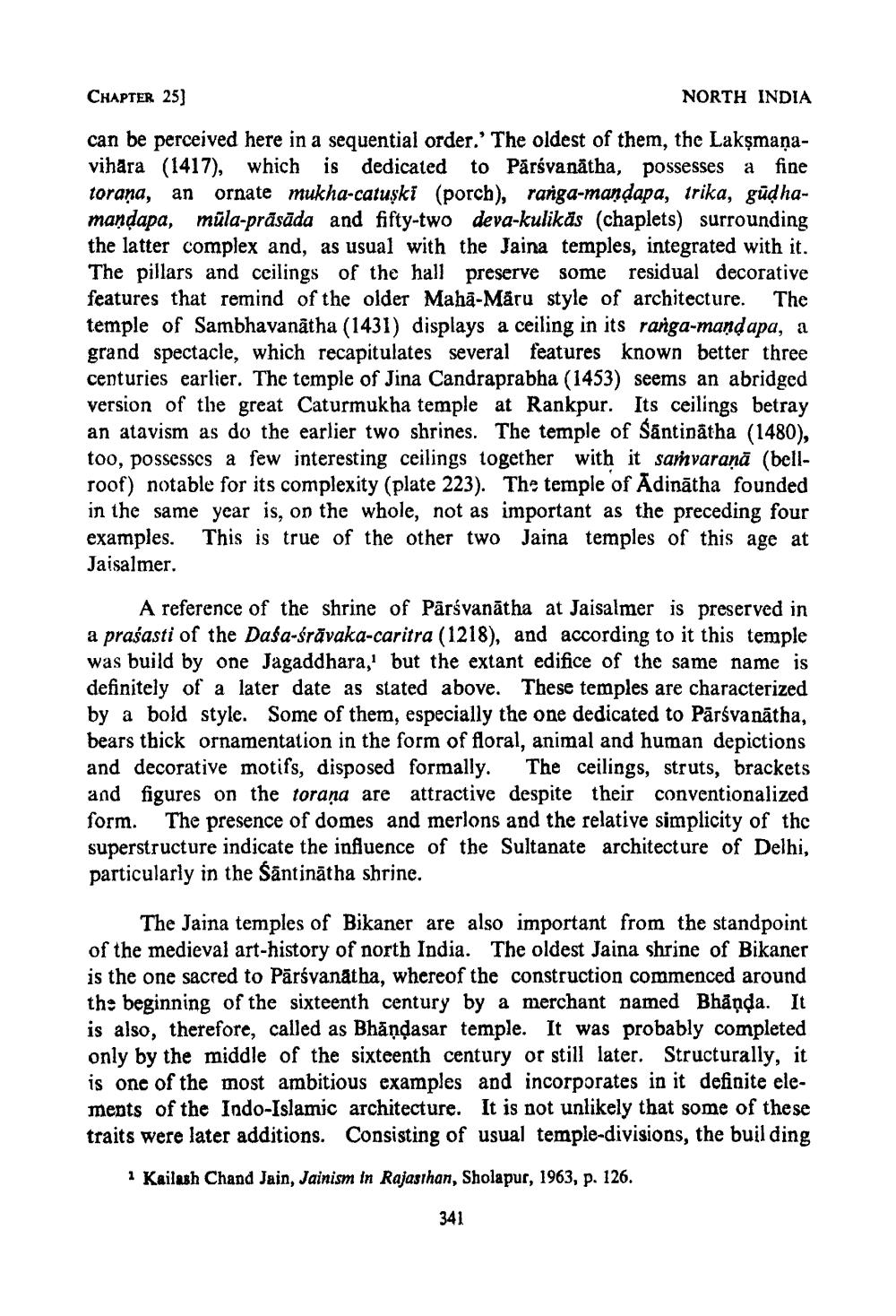________________
CHAPTER 25]
can be perceived here in a sequential order.' The oldest of them, the Lakṣmaṇavihara (1417), which is dedicated to Pārsvanatha, possesses a fine torana, an ornate mukha-catuşki (porch), ranga-maṇḍapa, trika, gūḍhamaṇḍapa, müla-prāsāda and fifty-two deva-kulikäs (chaplets) surrounding the latter complex and, as usual with the Jaina temples, integrated with it. The pillars and ceilings of the hall preserve some residual decorative features that remind of the older Maha-Märu style of architecture. The temple of Sambhavanatha (1431) displays a ceiling in its ranga-mandapa, a grand spectacle, which recapitulates several features known better three centuries earlier. The temple of Jina Candraprabha (1453) seems an abridged version of the great Caturmukha temple at Rankpur. Its ceilings betray an atavism as do the earlier two shrines. The temple of Santinatha (1480), too, possesses a few interesting ceilings together with it samvaraṇā (bellroof) notable for its complexity (plate 223). The temple of Adinatha founded in the same year is, on the whole, not as important as the preceding four examples. This is true of the other two Jaina temples of this age at Jaisalmer.
NORTH INDIA
A reference of the shrine of Parśvanatha at Jaisalmer is preserved in a prasasti of the Dasa-śrävaka-caritra (1218), and according to it this temple was build by one Jagaddhara,' but the extant edifice of the same name is definitely of a later date as stated above. These temples are characterized by a bold style. Some of them, especially the one dedicated to Pārsvanatha, bears thick ornamentation in the form of floral, animal and human depictions and decorative motifs, disposed formally. The ceilings, struts, brackets and figures on the torana are attractive despite their conventionalized form. The presence of domes and merlons and the relative simplicity of the superstructure indicate the influence of the Sultanate architecture of Delhi, particularly in the Santinātha shrine.
The Jaina temples of Bikaner are also important from the standpoint of the medieval art-history of north India. The oldest Jaina shrine of Bikaner is the one sacred to Pārsvanatha, whereof the construction commenced around the beginning of the sixteenth century by a merchant named Bhāṇḍa. It is also, therefore, called as Bhandasar temple. It was probably completed only by the middle of the sixteenth century or still later. Structurally, it is one of the most ambitious examples and incorporates in it definite elements of the Indo-Islamic architecture. It is not unlikely that some of these traits were later additions. Consisting of usual temple-divisions, the building
1 Kailash Chand Jain, Jainism in Rajasthan, Sholapur, 1963, p. 126.
341




